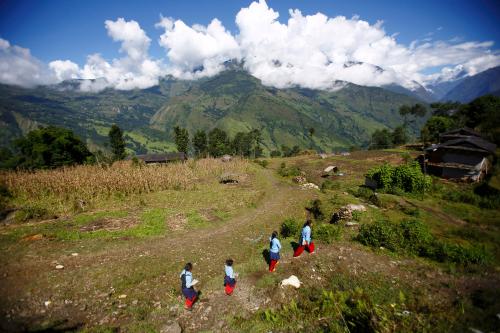Today, 1.2 billion adolescents stand at the challenging crossroads between childhood and the adult world. Nine out of ten of these young people live in the developing world and face especially profound challenges, from obtaining an education to simply staying alive—challenges that are even more magnified for girls and young women. — UNICEF, The State of the World’s Children 2011
Nepal has made tremendous progress toward the goal of providing education for all, in keeping with the Millennium Development Goals for 2015 and the Education for All initiative, as shown by the girls’ primary school attendance rate of 93.6 percent (MOE 2010-11). However, despite this progress, the quality of education in Nepal remains a challenge. Due to the overwhelming focus of national and international efforts on meeting the goal of universal primary education by 2015, the challenges faced by adolescent girls living in rural areas of Nepal in accessing secondary school have been understated. This study addresses the various challenges faced by adolescent girls in accessing secondary school in Nuwakot District, which is plagued by armed conflict and human trafficking.
Because of the poverty and gender discrimination that exist in Nuwakot District, adolescent girls are vulnerable not only to early marriage and child labor but also to human trafficking. Given that poverty cuts across all gender, caste and ethnic groups, adolescent girls from poor, disadvantaged households face particularly severe challenges in making the transition from primary to post-primary school due to high fees for secondary school and the poor quality of the education offered in the public schools. Due to these factors, the opportunity costs of school become more important than the perceived potential benefits education for parents living in poverty. Adolescent girls tend to be disproportionately affected by these conditions and therefore they often drop out before completing secondary school.
Adolescent girls in Nuwakot District need support to make the transition from primary to postprimary school and to complete secondary school with critical skills. This study proposes an intervention with three components: comprehensive scholarships, life skills training and career counseling. The establishment of a learning center that involves parents, teachers, schools, and community leaders will help to ensure the program’s sustainability and effectiveness.
This paper is organized as follows. First, it examines the educational situation in Nepal and explains the importance of adolescent girls’ education for overcoming poverty as well as avoiding early marriage, early pregnancy and child labor. Second, it explains the need to focus on adolescent girls living in rural areas and the challenges they face, in particular in Nuwakot District. Third, it examines the various approaches initiated by the government and donors to provide access to secondary school for adolescent girls in the rural areas of Nepal. Fourth, it identifies the gaps in the approaches that have been taken. The paper concludes by proposing a solution: A pilot program that would enable the adolescent girls in Nuwakot District to transition successfully from primary to postprimary school and to complete secondary school with the skills they need to make healthy choices and have a better future for themselves and their family members.





